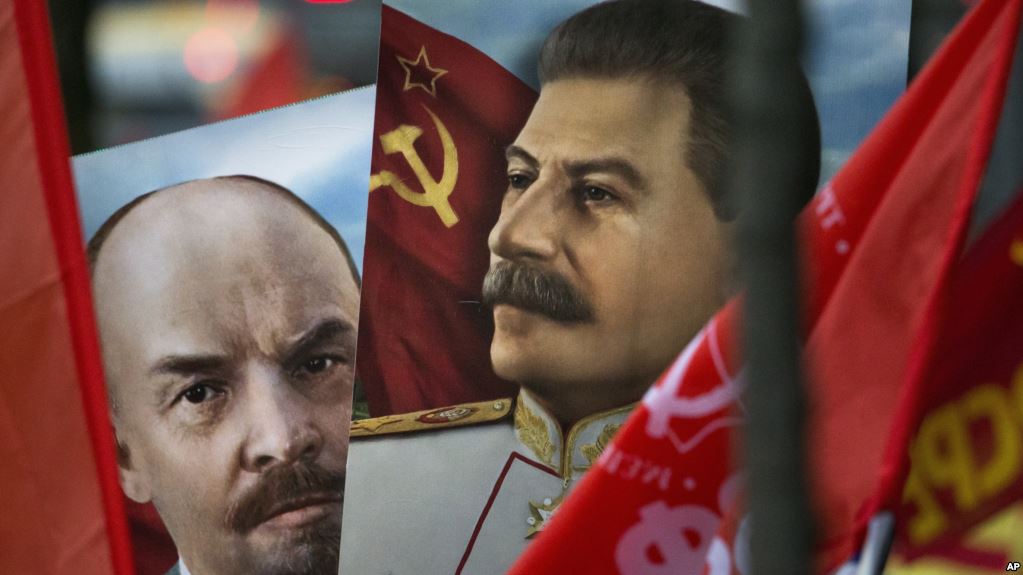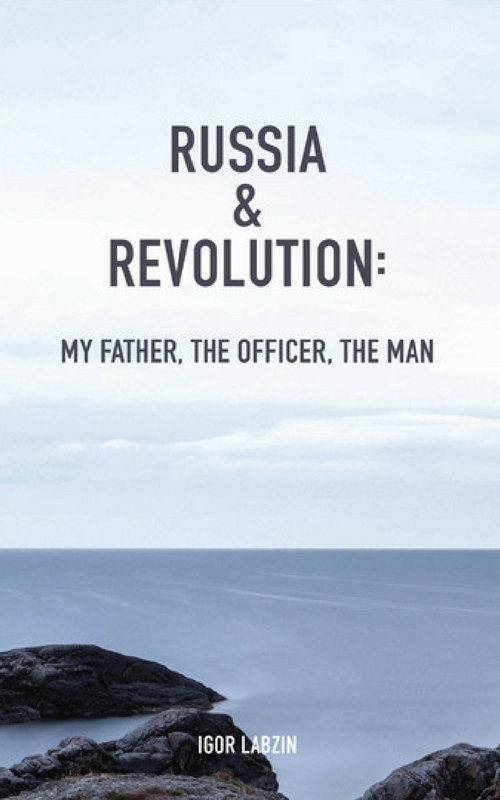Who were the most influential characters that changed Russia forever and who met Death by Stalin as a result?
A hundred years ago, the Bolshevik government led by Vladimir Lenin was battling for survival. It seemed that the Whites were attacking from all sides and having success in doing so.
There was a White Army contingent advancing onto St Petersburg from the direction of Estonia, there was General Denikin in charge of the White Volunteer Army advancing from the south towards Moscow and there was Admiral Kolchak advancing from Siberia towards Moscow as well.
The Red Army, which had been hastily formed only a little less than a year previously, was ill disciplined, ill trained and ill equipped.
So one side looked like it had everything going for it and the other looked as if its time would be up soon.
As so often happens in history, things turn out differently to what would have been reasonably predicted.
The White Army
The Whites were confident of victory and pushed onto Moscow and St Petersburg as fast as they could, whilst the Bolsheviks, also known as the Reds, were in a state of near panic.
The Whites were, in a way, the victims of their own confidence. Their lines of supply were too stretched out, the Generals too self-indulgent!
The Red Army
The Reds on the other hand pulled out all stops to turn their situation around. Men with fresh ideas found a ready place in the Red Army. Men like Leon Trotsky (nee Bronstein) a Jew from southern Ukraine, Semyon Budyonny a cavalryman in the Russian Imperial Army, who having felt shunned there because of his family’s lack of social status meant that his prospects of promotion were limited, joined the Red Army and was instrumental in stopping Denikin’s advance to Moscow.
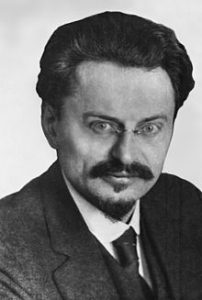 Trotsky turned the rabble Red Army into a formidable fighting machine and Budyonny continued to win battle after battle and was in time promoted to Marshall of the Soviet Union.
Trotsky turned the rabble Red Army into a formidable fighting machine and Budyonny continued to win battle after battle and was in time promoted to Marshall of the Soviet Union.
Meanwhile, another main player in the Bolshevik movement and the ensuing Civil War was Vasily Blyukher (later to be shot on the orders of Stalin in 1938), who was the commander of the Red Army when they stopped the White Army advance onto Blagoveshchensk in Eastern Siberia in 1921, in which Boris Labzin served on an armoured train called the Dimitry Donskoy. Then there were others such as Mikhail Tukhachevsky (later shot on the orders from Stalin in 1937), Alexander Yegorov also shot on the orders of Stalin in 1939 and Klement Voroshilov. All of whom in time reached the rank of Marshall of the Soviet Union except for Trotsky who was murdered in exile in far away Mexico by one of Stalin’s agents.
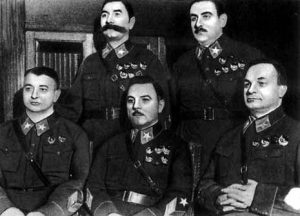 Left to right: Tukhachevsky, Budyonny,Voroshilov, Blyukher and Yegorov
Left to right: Tukhachevsky, Budyonny,Voroshilov, Blyukher and Yegorov
On the other side of the ledger, there were the stand-out White Generals and Admirals.
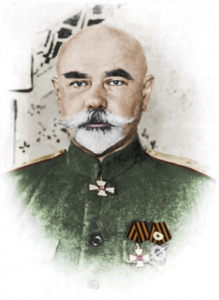 There was General Anton Denikin who never quite made it to Moscow, Admiral Kolchak who had all of Siberia in his hands but lost it to Tukhachevsky.
There was General Anton Denikin who never quite made it to Moscow, Admiral Kolchak who had all of Siberia in his hands but lost it to Tukhachevsky.
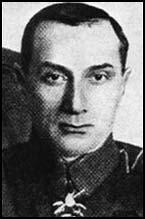 Baron Pyotr Wrangel, who was a courageous, dashing, brilliant cavalryman, led the White retreat to the Crimea and then organised a flotilla of 24 ships with their crews and 4,500 civilian refugees that sailed into exile, first to Turkey and then to Bizerte in Tunisia which was then under French rule.
Baron Pyotr Wrangel, who was a courageous, dashing, brilliant cavalryman, led the White retreat to the Crimea and then organised a flotilla of 24 ships with their crews and 4,500 civilian refugees that sailed into exile, first to Turkey and then to Bizerte in Tunisia which was then under French rule.
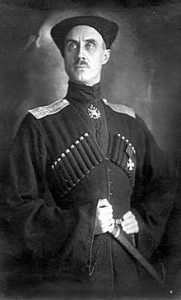
All of these White commanders went on to live in exile in Europe and the US for the remainder of their lives.
No rank of Marshall for them but on the flip side no death by Stalin either.

